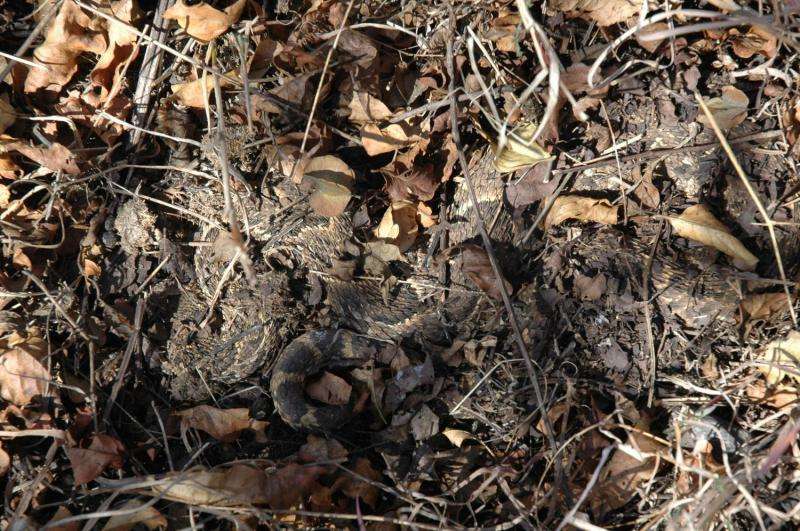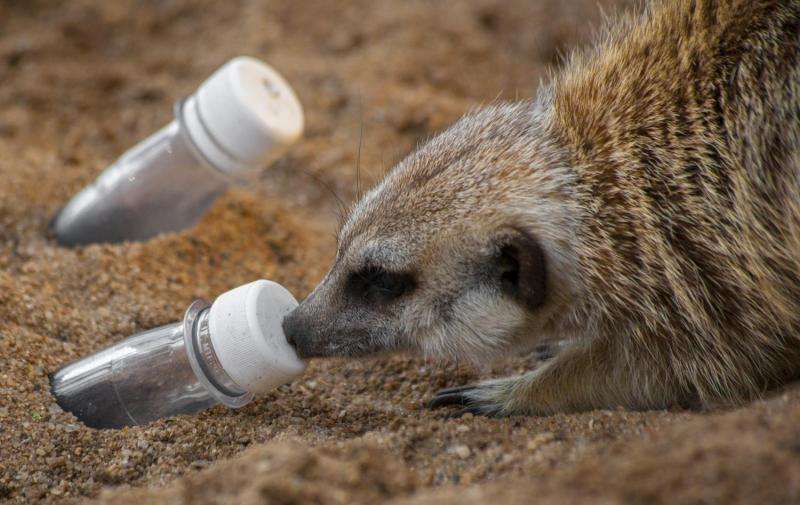Puff adders, the ultimate ambush predator

Puff Adders are the ultimate ambush predator.
This African viper species, Bitis arietans, relies on stealth, both to find its prey and to hide from their predators. And, while they have always been hard to find visually, they turn out to be virtually impossible to detect by scent.
Research done by researchers from the Wits School of Animal, Plant and Environmental Sciences, partly done at the Monte Casino Bird Gardens in Johannesburg, has shown that puff adders not only camouflage themselves with their highly evolved visual camouflage, but they are also difficult to find by smell.
This research, published in the journal, Royal Society Proceedings B, is the first to show a terrestrial animal using chemical crypsis (chemical camouflage) in order to survive.
"Puff adders hunt by ambushing their prey, and can lie motionless for weeks at a single location waiting for prey to pass. This behavior could make puff adders vulnerable to predation," says Professor Graham Alexander, who heads the Alexander Herp Laboratory at Wits.
"These selective pressures have driven the evolution of not only their impressive visual camouflage, but, as we just found, also their chemical camouflage."

During an intensive, three-year telemetry project that involved radio-tracking of 30 puff adders, three lines of evidence lead Alexander to conclude that puff adders must also possess a form of chemical camouflage.
First, puff adders usually remain motionless when under threat. Second, puff adders spend most of their time on the surface under grass or other vegetation and do not often seek refuge underground as is usual for most other snakes. This would make them sitting targets for predators if they had a strong scent. Third, he observed dogs and tame mongooses walking directly over motionless puff adders - both predators appeared to be completely unaware of the puff adders. Of the 42 known predators of puff adders, 15, including dogs and meerkats, rely primarily on their keen sense of smell to locate their prey.
A team led by Wits post-graduate student Ashadee Kay -Miller investigated this question by training a team of dogs, and meerkats - from the Monte Casino Bird Gardens - to scent-match and test if they could detect the scent of puff adders.
"We asked the meerkats and dogs to scent-match scent samples collected from puff adders and other snake species. The scents of most snakes were easily identified by the dogs and meerkats, but they failed dismally when it came to puff adder scent," says Miller.
While the puff adder is the first terrestrial vertebrate species for which chemical crypsis has been demonstrated, the researchers believe that this phenomenon is likely to be common among many ambushing species, but because olfaction is not the primary sense used by humans, not much research has focused on this aspect of biology.
More information: Ashadee Kay Miller et al. An ambusher's arsenal: chemical crypsis in the puff adder ( ) , Proceedings of the Royal Society B: Biological Sciences (2015). DOI: 10.1098/rspb.2015.2182
Journal information: Proceedings of the Royal Society B
Provided by Wits University



















